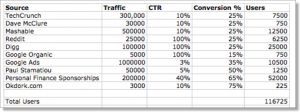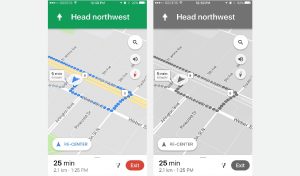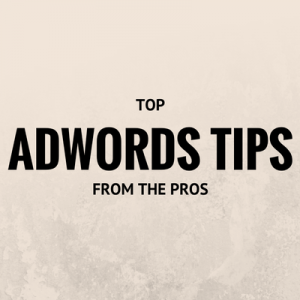Setting up large-scale marketing campaigns takes more than just time—it takes a TON of thought. And not just at the get-go. To be a modern marketer, you can never stop improving.
That means testing, tweaking, experimenting, building and rebuilding. If you want to truly optimize a marketing program to make it as fully functional and effective as possible, you must think strategically every step of the way.
 An example of this is the program that recently won SiriusDecisions’ Channel Program of the Year. Without testing, asking questions and repeatedly enhancing the process, achieving this honor would not have been possible. Here are the five steps we used to build an optimization framework for this project. You can thank us later.
An example of this is the program that recently won SiriusDecisions’ Channel Program of the Year. Without testing, asking questions and repeatedly enhancing the process, achieving this honor would not have been possible. Here are the five steps we used to build an optimization framework for this project. You can thank us later.
- Determine benchmarks and success.
A number of sources provide standards for email metrics like Silverpop’s annual benchmark study or Eloqua’s Benchmark Dashboard in its Insight tool. These benchmarks often break down by industry, but you don’t always get much insight into the type of audience being reported on.
Keeping your audience in mind is key. Is it a client base, an active audience or an audience mixed with inactive records? All of these could impact the metrics and skew them when comparing your own results. It’s helpful to keep these industry averages in your back pocket but setting some of your own metrics for your audience is ideal.
Review asset performance by audience for the last year. What do email metrics look like on average for different audiences? It’s important to weigh past performance of your own audience into goal setting and expectations of your current asset promotion.
For new assets you create, always make sure to discuss the goal you are looking to accomplish with the piece. Is this an awareness piece? Are you looking to drive more leads to your Sales team? Keep this goal in mind as you move to step 2 and begin creating assets.
- Create and promote assets.
Before you can optimize, you need something in market to see your audience reaction. It might be a new webpage, a banner ad, an email nurture or another way you reach your audience with the intent to drive engagement.
Once created, promote your asset and allow enough time in market to get a statistically significant audience to review for reporting. You can find free tools on the internet to calculate statistical significance, but HubSpot provides a good breakdown of the math behind the tools to help you understand the process.
Need help getting started with content ideas? Use some of these pointers.
- Review asset performance and ask questions.
Once your asset has a significant audience, review the metrics. How do they compare to your established benchmarks? How well are you achieving the goal of the promotion? Are you surprised at how few people are opening your emails? Is landing page conversion lower than expected?
If open rate is low, subject line testing is an option, but also consider reviewing your deliverability. Is your audience more likely to receive a text-based email in their inbox?
If conversion is low on your landing page, take a look at your form. Are you asking unnecessary questions? Does the form fall below the fold? Are there additional messages diluting the CTA?
Optimization is not limited to tweaks in the assets. Consider the overall goal of your promotion. If the goal is to get better leads to your Telesales or Sales team, do you have lead prioritization or lead scoring in place? Are you helping them make the most fruitful calls first? Components such as system enhancements and audience segmentation can also help when trying to accomplish goals.
Need help making sense of your metrics? Here are some top KPIs HubSpot recommends. Want a deeper dive? Check out The Definitive Guide to Marketing Metrics & Analytics from Marketo via this gated page.
- Develop hypotheses and implement changes.
Once you have a list of questions about the metrics that you’d like to understand better, determine what are the most important changes to make first to help drive you toward your goal. Create hypotheses around what you think will happen based on tweaks you make to the system or your assets.
Here are some examples:
- If we analyze all historical subject lines, then we will be able to write a formula for the ideal subject line.
- If we build lead scoring to create a look-a-like model of contacts who have taken scheduled meetings, then we will be able to send more qualified contacts to the Teleprospecting team.
From these hypotheses, implement one change per asset at a time. If multiple changes occur at the same time, it will be hard to say definitively which change had a positive or negative impact. Promote these updated assets to your audience.
Don’t make assumptions when asking questions or making hypotheses. For example, as email marketers, we have preconceived notions about the best time to send emails. Does that really work for your audience? Test it! Believe it or not, we have some audiences who are most engaged on Saturdays. By relying on our assumptions, we wouldn’t have learned the best sending day for this particular audience.
- Review the results and repeat.
Optimization is meant to be an ongoing cycle with a constant feedback loop. Look at optimization as a way to learn more about your audience so you can use each tidbit as a building block for optimal performance.
Once your updated assets have been promoted to a large enough audience, review the results. Did your tests get you closer to your goal? Sometimes optimizations don’t work how you expect, but take the findings seriously so you can make more informed hypotheses going forward.
If your goals impact your Sales team, get feedback from them. Are the leads they are receiving a good quality? Their feedback will help to create a more airtight campaign.
Repeat the process until you reach your goal, but keep in mind, some things should constantly be optimized.
Business & Finance Articles on Business 2 Community(58)
Report Post







